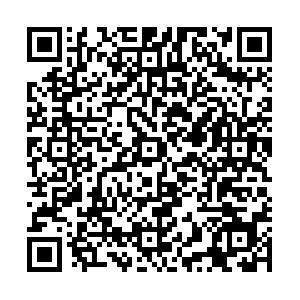|
[1]
|
Turaga P, Chellappa R, Subrahmanian V S, Udrea O. Machine recognition of human activities: a survey. IEEE Transactions on Circuits and Systems for Video Technology, 2008, 18(11): 1473-1488[2] Gu J X, Ding X Q, Wang S J, Wu Y S. Action and gait recognition from recovered 3-D human joints. IEEE Transactions on Systems, Man, and Cybernetics, Part B: Cybernetics, 2010, 40(4): 1021-1033[3] Gu Jun-Xia, Ding Xiao-Qing, Wang Sheng-Jin. Human 3D model-based 2D action recognition. Acta Automatica Sinica, 2010, 36(1): 46-53(谷军霞, 丁晓青, 王生进. 基于人体行为3D模型的2D行为识别. 自动化学报, 2010, 36(1): 46-53)[4] Du You-Tian, Chen Feng, Xu Wen-Li. Approach to human activity multi-scale analysis and recognition based on multi-layer dynamic Bayesian network. Acta Automatica Sinica, 2009, 35(3): 225-232(杜友田, 陈峰, 徐文立. 基于多层动态贝叶斯网络的人的行为多尺度分析及识别方法. 自动化学报, 2009, 35(3): 225-232)[5] Yu G, Goussies N A, Yuan J S, Liu Z C. Fast action detection via discriminative random forest voting and top-K subvolume search. IEEE Transactions on Multimedia, 2011, 13(3): 507-517[6] Ryoo M S, Aggarwal J K. Spatio-temporal relationship match: video structure comparison for recognition of complex human activities. In: Proceedings of the 12th International Conference on Computer Vision. Kyoto, Japan, Brazil: IEEE, 2009. 1593-1600[7] Yuan J S, Liu Z C, Wu Y. Discriminative video pattern search for efficient action detection. IEEE Transactions on Pattern Analysis and Machine Intelligence, 2010, 33(9): 1728-1743[8] Gall J, Yao A, Razavi N, Van Gool L, Lempitsky V. Hough forests for object detection, tracking, and action recognition. IEEE Transactions on Pattern Analysis and Machine Intelligence, 2011, 33(11): 2188-2202[9] Yao A, Gall J, Van Gool L. A Hough transform-based voting framework for action recognition. In: Proceedings of the 2010 IEEE Conference on Computer Vision and Pattern Recognition. San Francisco, CA, USA: IEEE, 2010. 2061-2068[10] Rodriguez M D, Ahmed J, Shah M. Action MACH: a spatio-temporal maximum average correlation height filter for action recognition. In: Proceedings of the 2008 IEEE Conference on Computer Vision and Pattern Recognition. Anchorage, Alaska, USA: IEEE, 2008. 1-8[11] Derpanis K G, Sizintsev M, Cannons K, Wildes R P. Efficient action spotting based on a spacetime oriented structure representation. In: Proceedings of the 2010 IEEE Conference on Computer Vision and Pattern Recognition. San Francisco, CA, USA: IEEE, 2010. 1990-1997[12] Oikonomopoulos A, Patras I, Pantic M. Spatiotemporal localization and categorization of human actions in unsegmented image sequences. IEEE Transactions on Image Processing, 2011, 20(4): 1126-1140[13] Cao L L, Liu Z C, Huang T S. Cross-dataset action detection. In: Proceedings of the 2010 IEEE Conference on Computer Vision and Pattern Recognition. San Francisco, CA, USA: IEEE, 2010. 1998-2005[14] Laptev I, Cedex R. On space-time interest points. International Journal of Computer Vision, 2005, 64(2-3): 107-123[15] Wang H, Ullah M M, Klser A, Laptev I, Schmid C. Evaluation of local spatio-temporal features for action recognition. In: Proceedings of the 2009 British Machine Vision Conference. London, UK: Springer-Verlag, 2009. 1-11[16] Wang H, Klaser A, Schmid C, Liu C L. Action recognition by dense trajectories. In: Proceedings of the 2011 IEEE Conference on Computer Vision and Pattern Recognition. Colorado Springs, CO, USA: IEEE, 2011. 3169-3176[17] Lampert C H, Blaschko M B, Hofmann T. Beyond sliding windows: object localization by efficient subwindow search. In: Proceedings of the 2008 IEEE Conference on Computer Vision and Pattern Recognition. Anchorage, Alaska, USA: IEEE, 2008. 1-8[18] Schuldt C, Laptev I, Caputo B. Recognizing human actions: a local SVM approach. In: Proceedings of the 17th International Conference on Pattern Recognition. Cambridge, England, UK: IEEE, 2004. 32-36[19] Chen C C, Aggarwal J K. Modeling human activities as speech. In: Proceedings of the 2011 IEEE Conference on Computer Vision and Pattern Recognition. Providence, RI: IEEE, 2011. 3425-3432[20] Yan K, Sukthankar R, Hebert M. Event detection in crowded videos. In: Proceedings of the 11th International Conference on Computer Vision. Rio de Janeiro, Brazil: IEEE, 2007. 1-8
|

 点击查看大图
点击查看大图



 下载:
下载:
